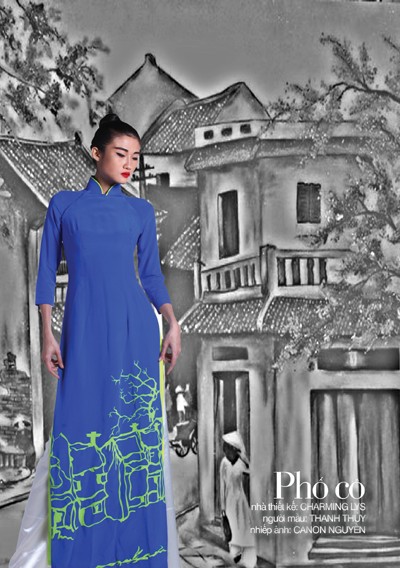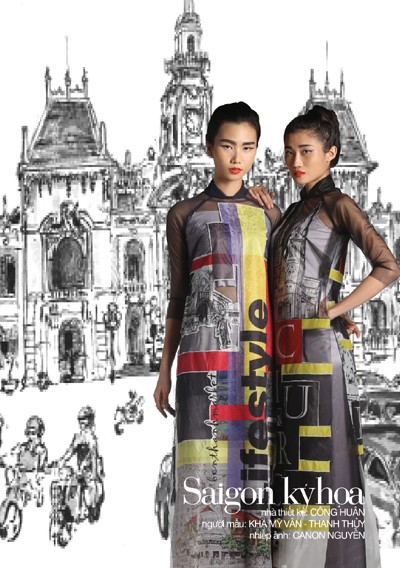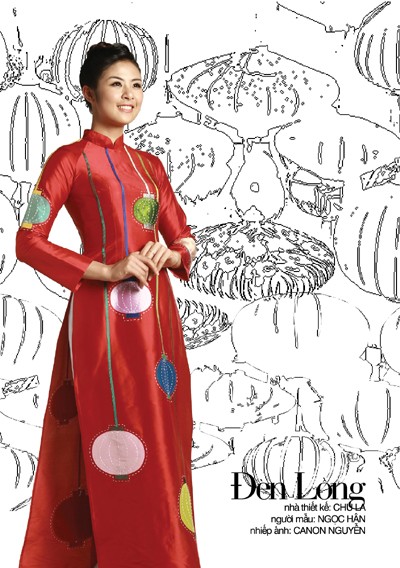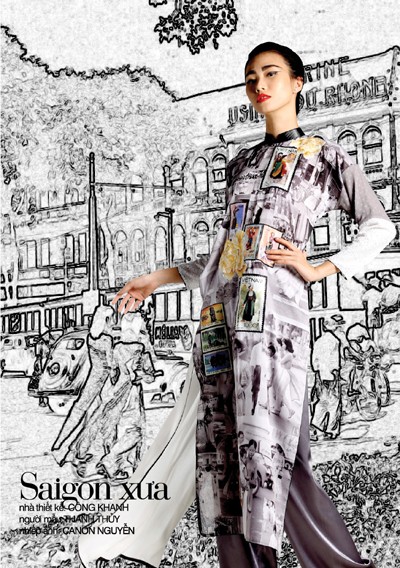(VOVworld)- Created in the 17th century, the long dress has become Vietnam’s traditional costume. The dress reflects the Vietnamese culture and embraces Vietnamese women’s beauty and personality.
 |
Mrs. Huynh Thi Kim Tuyen still remembers female students in traditional white long dresses mobilizing other students to join the revolutionary movements of the 1970s. Tuyen, who was the first Secretary of the Youth Union of Ho Chi Minh City’s University of Literature, now called the University of Social Sciences and Humanity, recalls that as a student in a white long dress, she went to several police stations to distribute leaflets and President Ho Chi Minh’s New Year poems. Tuyen recalls: “I joined the revolution when I was studying at the Gia Long school. In 1970, when I was at the University of Literature, I launched a movement of wearing traditional long dresses. The movement immediately became popular because the long dress captures the beauty and strength of Vietnamese women. At that time, there were poems and songs praising the movement of wearing long dresses at the University of Literature”.
 |
The long dress has become a symbol of Vietnamese women and is now the uniform of a number of schools and state agencies. Huynh Ngoc Van, Director of the War Remnants Museum wears a traditional long dress every day because in her daily work, she meets a lot of tourists. According to Ms Van, the traditional long dress promotes Vietnamese women’s beauty and reflects the image of Vietnam. On special occasions, all the female staff of the museum wear long dresses. In addition to displaying exhibits war evidence, the museum also organizes shows of traditional long dresses. Van says: “The War Remnants Museum receives about 700,000 visitors a year. Long dresses have become the uniforms of our guides and receptionists. This costume has impressed a lot of tourists. After touring our museum, many visitors take photos with our staff in long dresses and say the traditional long dress is an ambassador of Vietnamese culture”
 |
The traditional Vietnamese long dress has changed a lot since it was created. During the 1930s and 1940s, the design of the long dress did not change much but the colour became brighter. In 1939, tailors made long dresses with heart-shaped collars or banded collars with a bow. The nipped-waist style appeared in 1950. In 1960, the style of the long dress changed a lot: the fringe of the dress was levelled, its flap was extended to the ankle, and its collar was cut in a round shape. In the early 1970s, mini-long dresses appeared with short small flaps, which sometimes came to the knees. The waist was not nipped but the chest and sleeves became smaller. The trousers were long with 60-cm cuffs. Fashion designer Minh Hanh said fashion designers always try to give traditional long dresses a new style using new materials and new patterns: “Everybody thinks the long dress must be soft, light and graceful. But now thick materials like canvas and synthetics are used. The designers print patterns on them, and make long dresses with laser cutting techniques”.
 |
The traditional long dress promotes the image of Vietnam wherever Vietnamese people go embodying the charm and elegant beauty of Vietnamese women.